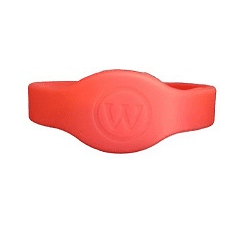
RFID explained
Contactless Credentials
We all know what a barcode is (a number encoded into lines) and a magnetic stripe (a number encoded on the stripe). There are some niceties when it comes to barcodes and magnetic stripes but by and large they are quite straightforward technologies. When it comes to RFID or contactless credentials there are a few things you need to get right before you jump in as mistakes could become quite costly. This is not an in-depth technical document but will cover some of the main concepts to ensure when you are designing your systems and ordering different technologies that they all interact as you had planned
This short article will cover the type of RFID leisure clubs are likely to come across which is High Frequency (13.6MHZ) passive RFID. This means that the credential is not powered and must be brought within a few centimetres of the reader in order to be read. These are also called Smart Cards. They consist of an antenna to communicate with the reader and a chip to store the data. These chips come in varying types and is the most common source of issues when installing RFID access control. Some of the more common chip names are Mifare Classic, HID iCLASS, Legic and Desfire EV1.
Advantages
- More reliable reading
- Can be produced in varying formats
- Can be made highly secure so that cards can only be read by specific pre-programmed readers
Cons
- More costly than barcodes and magnetic stripes
Security
Any credential technology you are likely to come across in the access control world will almost certainly comply with standard open formats. Each RFID credential has a UID (Unique Identifier) often referred as the Card Serial Number (CSN). For modern cards, and to all intents and purposes, this is a unique number. It resides on the chip and cloning it is not a straightforward process. However, these credentials can be read by any contactless reader which can read the standard open format. This means that you have a choice of reader you use as long as it complies to the standard and the supplier of your credentials.
An alternative means of reading the card is by using what is referred to as secure sector technology. Basically this involves writing e.g. membership numbers written to a specific sector on the chip when purchasing credentials. The contactless reader is then programmed specially using an encryption key to read those specific cards. These are necessarily more expensive and once installed tie you in to buying from one specific supplier. Using the secure sector is an optional extra level of security if you are just using it to read the membership number but if you want to use it as an ePurse then it is of course essential.

Multi-technology cards
There are a bewildering array of credential technologies on the market and therefore it may not always be possible to cover all your requirements with one chip. It is luckily quite possible to produce credentials with more than one chip on them. This ensures that as far as the customer is concerned they
only have one credential to remember but it will work on all the equipment you are using. For example, All Right Now have teamed up with Pulse to provide a multi-technology card to QHotels which has on it a standard MiFare chip, a chip for the Pulse equipment and a bar code on the back.
Types of credential
As well as the standard PVC cards, these include smart silicon wristbands, smart cards, key fobs and smart stickers for mobile phones
We would recommend giving us a call if you are thinking of using RFID in your facilities. All Right Now can then advise you and help you to ensure that all the equipment the credential will be used for (EPOS, access control, Gym equipment, lockers etc.) will be compatible. Visit us at www.allrightnow.co.uk or call +44 (0)1295-660566.
Want to keep up to date with the latest news?




